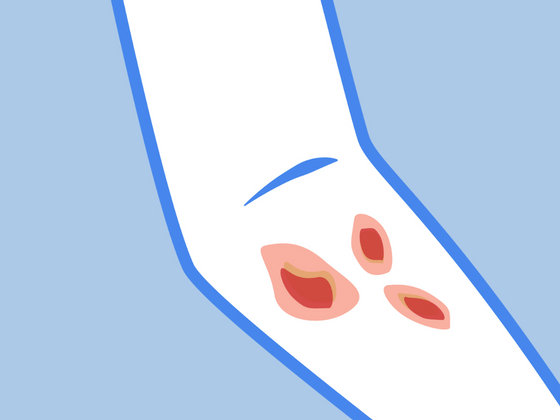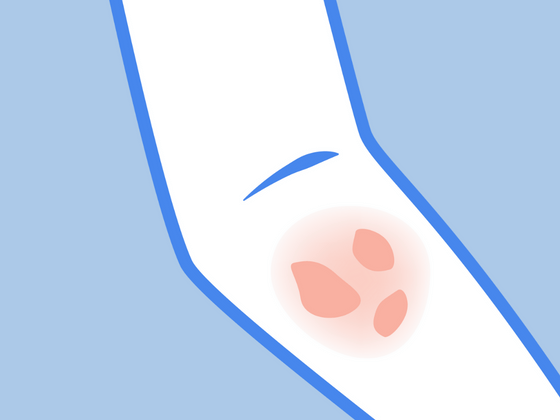Do you suffer from eczema on toes, feet or eczema on ankles and can’t find relief from both scratching and irritation? Foot eczema can be difficult to treat due to the constant use of our feet, as well as moisture and sweat. Although there are many causes to why foot eczema occurs, an eczema on feet treatment doesn’t need to be complicated.
Foot eczema can be easily confused with athlete’s foot, so it’s important to differentiate the two.
Athlete’s foot, unlike foot eczema, is a fungal infection that occurs usually between the toes. Symptoms include:
- Itching, stinging, and burning between the toes or soles of the feet
- Blisters on feet that itch
- Cracking and peeling of skin on feet (commonly seen between toes and on soles)
- Dry skin on soles of feet
- Discolored and thick toenails
- Weeping skin
Alternatively, eczema on toes, feet or eczema on ankles can be caused either by external issues such as allergens and seasonal allergies or by internal factors such as stress, hormones, an unhealthy gut, and much more.
There are also different types of eczema, which are characterized by different symptoms. These are:
Nummular Eczema —characterized by oval plaques on feet and is usually caused by stress, climate changes, and occupational hazards.
Contact Dermatitis —appears swollen, red, and with blisters or cracked skin. Most cases of foot contact dermatitis are caused by allergens found in shoes or socks.
Dyshidrotic Eczema —also known as Pompholyx Eczema and is most commonly seen on the feet, especially among athletes. It appears in painful blisters along the soles of the feet and is usually accompanied by severe itching.
Eczema on Feet Treatment Ideas
If you are in fact suffering from foot eczema, then there are a variety of natural treatments you can turn to, to find relief. As always, you want to make sure that whichever skincare you use is gentle for your itchy skin. We recommend the following eczema on feet treatments:
Nourish + Hydrate Manuka Balm
This thick, creamy balm or “crointment” (creamy ointment) works for all types of eczema and is great for use anywhere on the body, especially feet and hands. Also contains Manuka oil and Manuka honey, which contain anti-bacterial properties.
Dry Wrap Therapy
If your eczema on toes, feet, or eczema on ankles is very severe and you need immediate relief, try looking into dry wrap therapy. All you need is a natural eczema cream or ointment like those listed above, as well as a hypoallergenic sock to lock in the emollient.
Our new Remedywear™ Socks for Adults with Foot Eczema and these Kids Socks for Eczema are made to speed up the healing process of foot eczema blisters, peeling skin, dryness, and more. Using them for dry wrap therapy helps to eliminate further irritation, as well as relieve itching and inflammation quickly and naturally. Alternatively, we have 100% organic cotton hypoallergenic socks that would do the trick for extra sensitive skin as well.
For foot eczema relief, make sure to check out our entire collection of Eczema Socks.
Elimination Diet
If you are continuing to suffer from flare-ups and the above recommendations are not helping, then we recommend testing out an elimination diet, but only under a physician’s supervision and direction. This process allows both you and your doctor to identify any possible underlying food allergies that may be preventing your eczema from healing. An elimination diet essentially means eliminating certain foods from your diet for specific amounts of time and then reintroducing them to determine which foods cause reactions. Many eczema sufferers have found relief using this method.
Looking for tips to heal naturally? Check out our other blog post: How to Get Rid of Eczema Naturally.
Share your own eczema on feet treatments with us on Facebook!
Resources
https://www.webmd.com/skin-problems-and-treatments...
https://www.foothealthfacts.org/conditions/eczema-...
https://www.msdmanuals.com/professional/dermatolog...
------------------
Bio: Laura is a contributor and content developer for The Eczema Company. She is in no way a medical professional. Her comments, suggestions, and reflections are not intended to replace any medical advice. Always seek the help of a medical professional before undertaking any diet or lifestyle changes.








